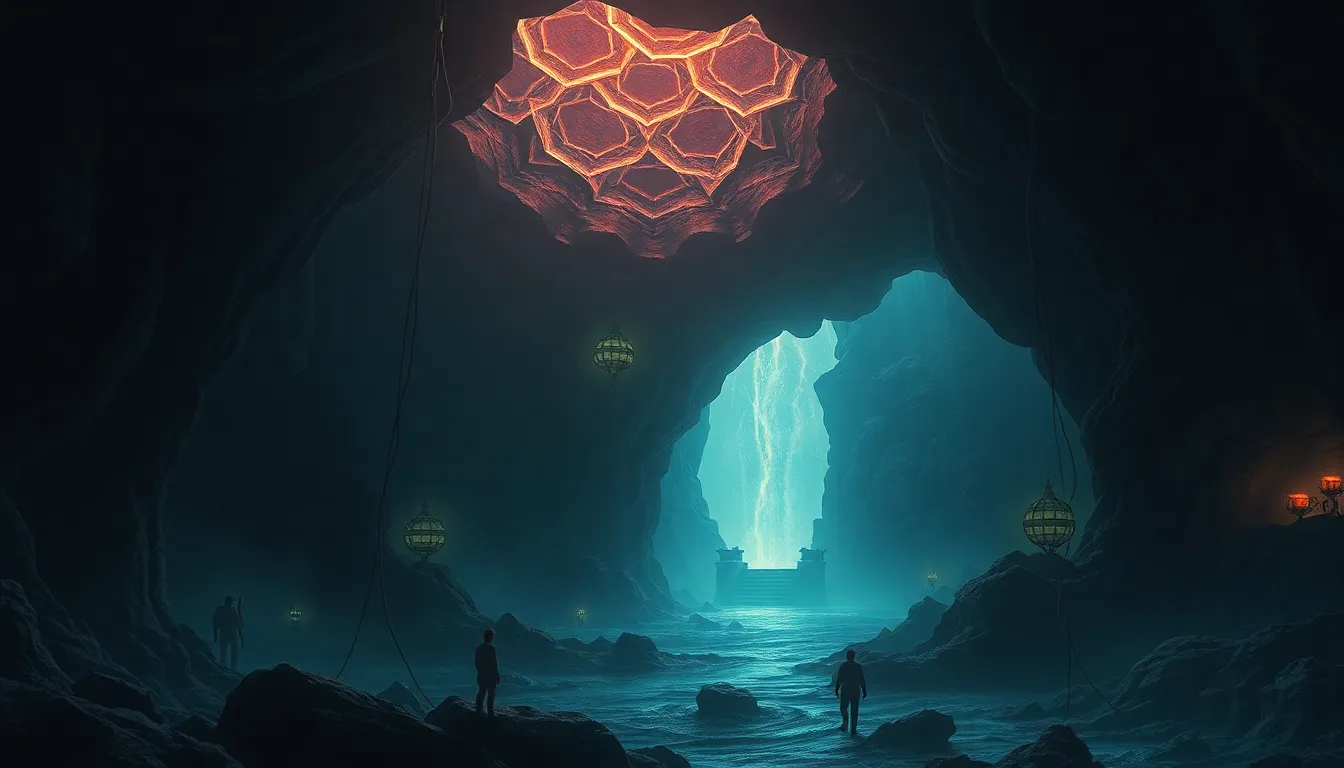The Cosmic Connection: How Creation Myths Unite Cultures
Introduction to Creation Myths
Creation myths are fundamental narratives that explain how the universe, Earth, and humanity came into existence. These stories play a crucial role in shaping cultural identities and providing frameworks for understanding the world. Across various societies, creation myths serve not only as explanations for the origins of life but also as reflections of the values, beliefs, and experiences of the people who tell them. This article aims to explore the universal themes and connections among different cultures’ creation myths, highlighting their significance in fostering a sense of belonging and understanding among diverse human societies.
The Role of Creation Myths in Human Society
Creation myths serve essential functions within human societies. They provide answers to questions about origins and existence, offering narratives that help individuals and communities make sense of their place in the cosmos. The following are key roles that creation myths fulfill:
- Explanation of Origins: They offer narratives that articulate how the world and humans came to be.
- Community Bonding: Shared stories foster a sense of belonging and unity among members of a culture.
- Identity Formation: Creation myths contribute to cultural identity, influencing social norms and values.
These myths are integral to the social fabric, often recounted during significant communal rituals and ceremonies that reinforce cultural heritage.
Common Themes in Creation Myths
Numerous creation myths encompass similar themes, reflecting shared human concerns and experiences. Some of the most common motifs include:
- Chaos: Many myths begin with chaos or a primordial void, setting the stage for the emergence of order.
- Divine Beings: The involvement of gods or supernatural forces is a frequent element, illustrating the interaction between the divine and the earthly.
- The Emergence of Life: Stories often depict the creation of humans and other life forms, emphasizing the interconnectedness of all beings.
The symbolic meanings behind these themes can provide insights into human nature, reflecting our desires, fears, and understanding of existence.
Case Studies of Creation Myths from Diverse Cultures
To appreciate the diversity and commonality in creation myths, we can examine notable examples from various cultures:
- Hinduism: In Hindu cosmology, the universe undergoes cycles of creation and destruction, with deities like Brahma responsible for creation.
- Christianity: The Genesis account describes God creating the world in six days, culminating in the creation of humanity in His image.
- Indigenous Tribes: Many Indigenous cultures have rich oral traditions, such as the Navajo creation story, which involves the emergence of mankind from different worlds.
- Ancient Civilizations: In ancient Egypt, the myth of Atum describes the god creating himself and subsequently creating the world from primordial waters.
These examples illustrate both similarities and differences in narrative structure and themes, highlighting how cultures articulate their understanding of creation.
The Influence of Geography and Environment on Creation Myths
The physical environment significantly influences the narratives found in creation myths. Local landscapes, climate, and available resources often shape the stories told by a culture. For instance:
- Desert Cultures: Myths from arid regions may emphasize survival and adaptation, incorporating elements like water as sacred.
- Coastal Societies: Communities near oceans often have creation stories that highlight the sea’s role in life and sustenance.
- Mountainous Regions: Cultures in high altitudes may feature myths that include gods residing in mountains, symbolizing power and stability.
These environmental factors contribute to the richness and diversity of creation narratives across cultures.
The Evolution of Creation Myths Over Time
Creation myths evolve alongside the societies that tell them. As cultures change due to technological advancements and societal shifts, so too do their narratives. For example:
- Modern Retellings: Many ancient myths are reinterpreted in contemporary literature and media, often emphasizing themes relevant to modern audiences.
- Interfaith Dialogues: As societies become more interconnected, there is an increasing interest in comparing and synthesizing different creation stories.
This evolution showcases the dynamic nature of cultural narratives and their ability to adapt to changing contexts.
The Interconnectivity of Global Cultures Through Creation Myths
Creation myths demonstrate the interconnectedness of global cultures, revealing shared human experiences and values. Examples of cultural exchange include:
- Syncretism: The blending of different mythologies can lead to new narratives, as seen in various religious traditions.
- Shared Motifs: Common themes, such as the hero’s journey or the battle between good and evil, appear across cultures, illustrating shared human concerns.
This interconnectivity highlights the ways in which humanity seeks to understand its origins, despite geographical and cultural differences.
The Philosophical and Spiritual Implications of Creation Myths
Creation myths address profound questions regarding existence, purpose, and the nature of the universe. They shape spiritual beliefs and practices in significant ways:
- Existential Questions: Myths often provide answers to questions about why we exist and what our purpose is.
- Spiritual Frameworks: They inform religious beliefs and practices, guiding adherents in their spiritual journeys.
Through these narratives, cultures articulate their understanding of the cosmos and humanity’s place within it.
Challenges in Interpreting Creation Myths
Interpreting creation myths poses challenges, particularly from anthropological and theological perspectives. Key issues include:
- Cultural Appropriation: Engaging with myths from different cultures requires sensitivity to avoid misrepresentation or exploitation.
- Complex Narratives: Myths often reflect multilayered meanings that can be difficult to unpack, necessitating a respectful and nuanced approach.
Understanding these complexities is vital for fostering respectful engagement with diverse traditions.
Conclusion: The Lasting Legacy of Creation Myths
Creation myths continue to hold significant relevance in contemporary society, offering insights into cultural identities and shared human experiences. As we navigate a world marked by diversity, appreciating and preserving the richness of these narratives is essential. By exploring the connections among creation myths, we can cultivate a deeper understanding of our shared humanity, fostering respect and appreciation for the myriad ways in which cultures articulate their origins and existence.




